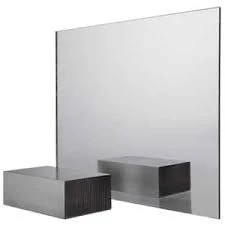

Understanding the Cutting and Floating of Glass A Comprehensive Overview
The world of glass production is a fascinating blend of artistry and industrial precision. Among the many processes involved in the creation of glass products, cutting and floating glass stand out as critical operations. The terms “cutting” and “floating” refer to different aspects of glass manufacturing, and understanding them is essential for anyone involved in the industry or simply interested in the mechanics of glass.
What Is Float Glass?
Float glass, developed in the mid-20th century, is a type of flat glass created through the float glass process. This innovative method involves floating molten glass on top of molten tin, resulting in a uniform thickness and a perfectly smooth surface. The glass's composition usually includes silica, soda ash, and limestone, which contribute to its transparency, durability, and optical clarity.
The float glass process begins with heating raw materials in a furnace until they melt. The molten glass is then poured onto a pool of molten tin. Since glass is less dense than tin, it floats on the surface, forming a continuous sheet. This sheet is then cooled down gradually to avoid any imperfections or stresses within the material. The result is a flat glass product ideal for a variety of applications, from windows to mirrors and more.
The Importance of Cutting Glass
Once the float glass has been produced, the next step is cutting. Cutting is a crucial process in glass manufacturing as it involves shaping the glass into specific dimensions suitable for various applications. The ability to cut glass accurately is vital for quality control in manufacturing, as improperly cut pieces can lead to wastage and increased costs.
Cutting glass requires specialized tools and techniques. Traditionally, glass was cut using a glass cutter, a tool with a small wheel that scores the surface of the glass. When sufficient pressure is applied along the scored line, the glass can be snapped cleanly into two pieces. This method is effective for smaller pieces and basic shapes.

For larger projects or more complex designs, advanced machinery is often employed. CNC (Computer Numerical Control) machines allow for precise cutting with automated processes, considerably enhancing efficiency and accuracy. These machines can create intricate patterns and shapes that would be challenging to achieve manually, catering to the growing demand for customized glass products.
Quality Control in Cutting and Floating Glass
Quality control is paramount in both the floating and cutting processes. During the float glass production, any imperfections such as bubbles or inclusions are detected and either corrected or discarded. Similarly, the cutting process must adhere to stringent standards to ensure that the dimensions and edges of the glass meet the required specifications.
Industry standards, such as those set by the International Organization for Standardization (ISO), provide guidelines for the quality of flat glass. These standards cover aspects such as thickness tolerances, optical quality, and surface finish. Adhering to these standards not only ensures product quality but also guarantees safety, especially in architectural applications where glass is exposed to varying environmental conditions.
Conclusion
The cutting and floating of glass are indispensable processes in the glass manufacturing industry, each playing a vital role in ensuring high-quality products. Float glass, with its unique properties and broad applications, has revolutionized how we perceive and utilize glass in our daily lives. Cutting techniques, ranging from manual to automated methods, enhance the versatility of glass products, making them suitable for innovative design and functional needs.
As technology evolves, we can expect further advancements in both the floating and cutting processes, leading to even greater precision and efficiency. This evolution not only impacts the glass industry but also the architects, designers, and consumers who rely on quality glass for aesthetic and practical purposes. Whether you are a professional in the industry or simply an admirer of glass creations, the intricacies of cutting and floating glass offer a captivating glimpse into the world of materials science and craftsmanship.